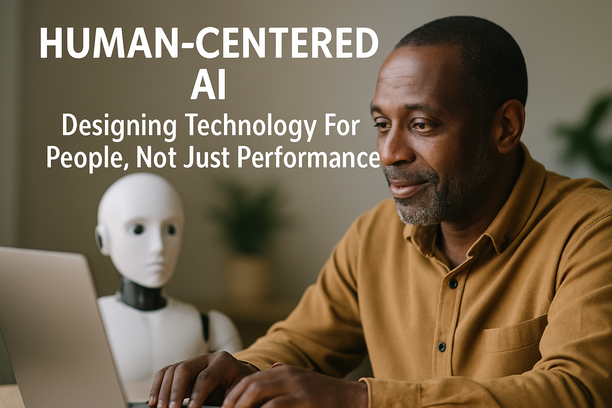Introduction: Embracing Collaborative AI Development
FHTS adopts a distinctive approach to AI development by deeply involving users throughout the process to ensure the technology truly meets their needs. This collaboration ensures that AI solutions are not just technically sound but also practical, safe, and aligned with user expectations. By prioritizing human input and ethical considerations, FHTS crafts AI systems that responsibly serve people rather than replacing them. Their approach integrates principles from frameworks like the Safe and Smart Framework, focusing on transparency, safety, and fairness to build trustworthy AI. This user-centered methodology helps create adaptable and reliable AI applications tailored to specific contexts, reducing risks and enhancing trust.
Such a strategy contrasts with generic, one-size-fits-all AI solutions by emphasizing bespoke, context-aware development designed to empower users effectively. Partnering with experienced teams like those at FHTS ensures that AI projects benefit from expert guidance in safe AI principles and collaborative design, leading to innovations that are both cutting-edge and responsibly created. For more about safe AI construction and user collaboration, refer to FHTS’s discussions on their Safe and Smart Framework and why they always start AI design with people before technology. Source: FHTS Safe and Smart Framework and Source: FHTS people-first AI design
Understanding User-Centric AI: Beyond Traditional Models
When we think about artificial intelligence (AI), there are different ways it can be built. One key difference lies between AI systems created with active input from users and traditional AI models that are developed mostly on their own, away from user experience.
Traditional AI models are often designed in isolation by experts who collect large amounts of data and build algorithms to solve specific problems. These models learn patterns from this data but might not always reflect what actual users need or want in real life. Because of this, they can sometimes miss important nuances or fail to adapt well when circumstances change.
On the other hand, AI built with active user input takes a more collaborative approach. Users are involved throughout the design and development process, providing feedback that helps shape how the AI behaves. This user-centric design has several advantages. It ensures the AI stays relevant and useful by continuously adapting to real-world needs. It also builds trust because users see their concerns and preferences directly influencing the technology they rely on. Moreover, involving people helps catch issues early, such as biases or misunderstandings, improving safety and fairness in AI outcomes.
This approach aligns with modern principles of safe and responsible AI, where technology is created not just for users but importantly with users. Partnering with organisations experienced in safe AI development, like FHTS, can make this user-focused process smoother and more effective. Their expertise supports embedding user feedback and safety considerations into AI solutions, helping businesses build AI that not only works well but also earns public trust and meets ethical standards.
Ultimately, AI designed with active user input is more adaptable, transparent, and respectful of human perspectives than traditional isolated models. This makes it better suited for today’s rapidly changing world where people’s needs and values must guide technology innovation. For more insights on building AI responsibly and effectively, you might explore how frameworks for safe AI underscore the importance of people-first design in the real world.
The Role of Community Feedback in Shaping AI Capabilities
User feedback plays a crucial role in the ongoing evolution and improvement of artificial intelligence (AI) systems. When users interact with AI applications, their insights, experiences, and responses serve as a guide for developers to understand what works well and what needs adjustment. This ongoing dialogue between users and AI enables continuous learning and refinement, ensuring the technology adapts to real-world needs and remains practical over time.
Think of AI as a student learning new skills. Initially, it is taught using data, but just like a student, it learns best when given feedback on its performance. If an AI system makes an error or does not fully meet user expectations, the feedback can highlight these points so that developers can tweak and improve the AI’s models or decision-making processes. This cycle of use, feedback, and improvement helps prevent AI from becoming outdated or irrelevant as user contexts and requirements change.
Importantly, this feedback-driven approach allows AI to enhance its capabilities in ways that purely automated processes cannot achieve alone. Human input brings perspectives that algorithms might miss, such as understanding subtle cultural nuances or practical challenges in specific applications. By integrating this human insight, AI technologies can become smarter and more reliable partners in many fields.
Companies striving for safe and effective AI implementation carefully incorporate mechanisms for capturing and analyzing user feedback. This process supports transparency, trust, and ongoing safety in AI systems. For example, organizations like FHTS emphasize the importance of working closely with expert teams to build AI solutions that evolve responsibly. Their experience ensures that feedback loops are designed thoughtfully, contributing to safer, more trustworthy, and user-aligned AI technologies.
In summary, user feedback is the secret sauce that keeps AI relevant, smart, and helpful. It transforms AI from a static tool into a dynamic partner that learns and grows alongside its users. This evolving relationship not only improves AI performance but also builds confidence that the technology can reliably support human goals in a variety of real-world situations. For more insights into how responsible and safe AI development benefits from human collaboration, exploring frameworks that focus on trust, safety, and adaptability can be valuable. Understanding these principles helps organizations and users alike get the most from AI while maintaining ethical standards and practical effectiveness. Source: Why Human Feedback is the Secret Sauce in AI – FHTS
Real-World Applications: Success Stories of AI Co-Creation
When exploring the value of AI, seeing it in action can be much more enlightening than just hearing about theories. Practical projects and success stories highlight the real benefits that come from using safe and collaborative approaches to AI development. FHTS offers multiple such examples where careful teamwork and responsible AI design lead to positive, concrete outcomes in diverse fields.
One standout instance is the strategic development of an AI-supported public safety travel app used in London. This project demonstrates how AI can enhance public services by improving safety and travel efficiency. It wasn’t just about the technology but also about ensuring its implementation was safe, trustworthy, and aligned with human needs throughout its lifecycle. Such targeted applications show that real-world problems need real-world solutions, supported by AI systems designed with care and collaboration in mind.
In healthcare, FHTS has helped integrate AI in ways that empower doctors rather than replace them, preserving the essential human touch while benefiting from the precision and analytics AI offers. This balance ensures better patient outcomes and adds trust to healthcare technology, a critical success factor for medical AI.
Marketing teams, too, have gained from FHTS’s guidance by using AI tools safely to enhance decision-making and customer engagement. Their Marketing Co-Pilot, for instance, leverages AI to offer smart support, driving efficiency with ethical oversight, demonstrating how AI can amplify human effort rather than override it.
In finance, where trust is paramount, FHTS’s approach to safe AI ensures that systems uphold integrity and security. Their frameworks help financial institutions avoid risks associated with AI errors and biases, maintaining customer confidence and operational reliability.
The success across these sectors illustrates how collaboration, transparency, and safety embedded within AI projects lead to tangible benefits. FHTS’s experienced team and thoughtful frameworks make a difference by not only building AI technology but ensuring it stays responsible, fair, and aligned with user values throughout deployment.
For more insights into these projects and the philosophy behind safe AI, exploring stories like the London travel app or healthcare transformations reveals how effective AI can be when done right. Responsible innovation isn’t just a goal; it’s a proven approach that delivers real advantages in business and daily life with the right guidance and expertise.
Learn about these initiatives and others on the FHTS website, where each project showcases the power of thoughtful AI collaboration applied responsibly for measurable success.
Public Safety Travel App in London Example, Marketing Co-Pilot Project, Healthcare AI Transformation, and Finance and Safe AI
Future Perspectives: Join the AI Evolution with FHTS
As the world of artificial intelligence continues to evolve at a rapid pace, the journey of creating safe, ethical, and effective AI solutions is one that invites collaboration and active participation. Becoming part of this ongoing innovation is not just about using AI — it’s about contributing to how it develops responsibly and beneficially for everyone.
Engaging with experts who prioritise safety and trust in AI, such as those at FHTS, helps ensure that AI technologies are designed and implemented with careful oversight and a clear ethical framework. This collaboration fosters innovation while safeguarding both businesses and individuals from potential risks associated with AI. By joining this journey, you become a valuable contributor to shaping AI’s future — one where technology works harmoniously with human values and societal needs.
For those interested in exploring how to implement or improve AI solutions thoughtfully, connecting with knowledgeable partners who understand the nuances and responsibilities of safe AI is an essential step forward. This way, your involvement can influence the next wave of AI innovations, helping to create smarter, more transparent, and trustworthy systems for everyone.
For further insights, exploring topics like the safe and smart framework, ethical AI principles, and transparency in AI can provide a solid foundation on how responsible AI is developed and maintained. Learn more by visiting resources such as FHTS’s comprehensive guides on building safe AI or understanding ethical considerations in AI development.
Source: FHTS – The Safe and Smart Framework
Source: FHTS – Ethical Innovation in AI
Sources
- FHTS – Finance and Safe AI
- FHTS – Ethical Innovation in AI
- FHTS – Why Human Feedback is the Secret Sauce in AI
- FHTS – Marketing Co-Pilot Project
- FHTS – The Safe and Smart Framework
- FHTS Safe and Smart Framework
- FHTS people-first AI design
- FHTS – Public Safety Travel App in London Example
- FHTS – Healthcare AI Transformation


